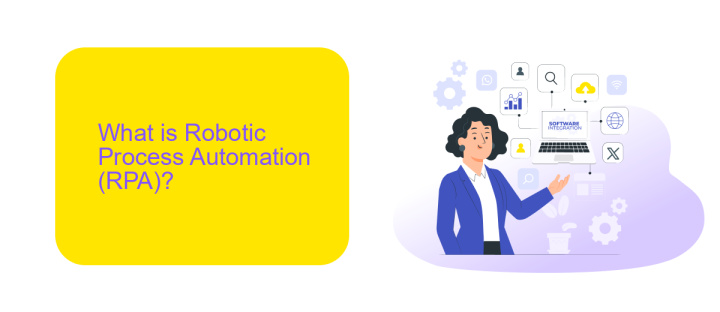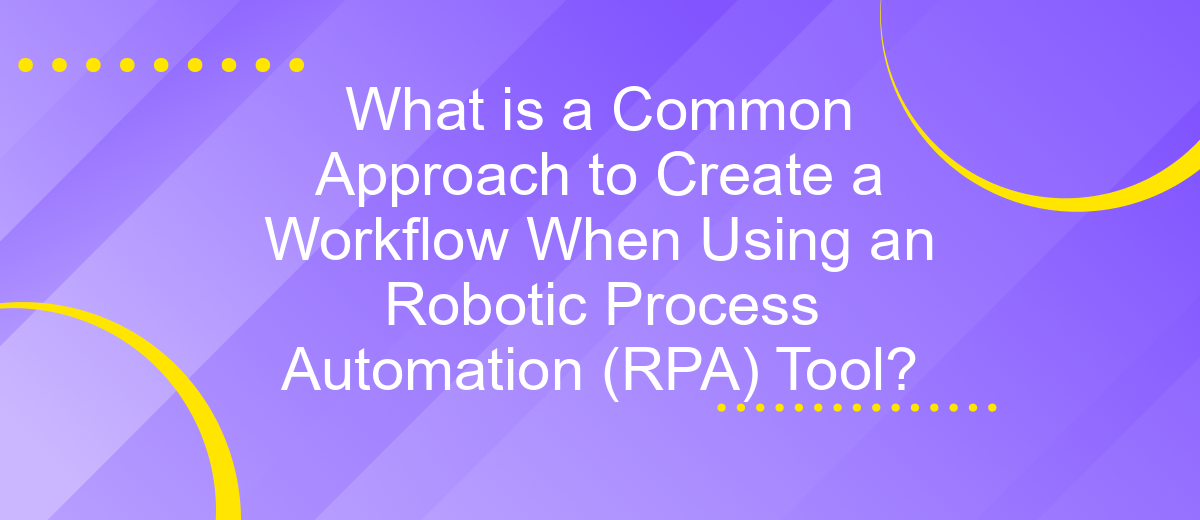What is a Common Approach to Create a Workflow When Using an Robotic Process Automation (RPA) Tool?
Robotic Process Automation (RPA) tools have revolutionized the way businesses streamline repetitive tasks, enhancing efficiency and accuracy. A common approach to creating a workflow with an RPA tool involves careful planning, process mapping, and iterative testing. This article delves into the essential steps and best practices for designing effective RPA workflows, ensuring seamless integration and optimal performance in your business operations.
Introduction
Robotic Process Automation (RPA) tools have revolutionized the way businesses handle repetitive tasks, enabling more efficient and error-free workflows. Establishing a robust workflow with RPA involves several key steps that ensure the automation process is seamless and effective. This introduction outlines a common approach to creating such workflows.
- Identify Processes for Automation
- Define Workflow Objectives
- Select the Right RPA Tool
- Design and Map the Workflow
- Integrate with Existing Systems
- Test and Validate the Workflow
- Monitor and Optimize
One crucial aspect of designing an efficient RPA workflow is the integration with existing systems and services. Tools like ApiX-Drive can facilitate seamless integration, ensuring that data flows smoothly between different platforms and applications. By following these steps and leveraging integration tools, businesses can create effective and reliable RPA workflows that enhance productivity and reduce operational costs.
What is Robotic Process Automation (RPA)?

Robotic Process Automation (RPA) is a technology that automates repetitive and rule-based tasks typically performed by human workers. By utilizing software robots or "bots," RPA can streamline processes such as data entry, transaction processing, and customer service interactions. These bots mimic human actions within digital systems, interacting with applications, websites, and databases to execute tasks quickly and accurately. The primary goal of RPA is to enhance efficiency, reduce operational costs, and minimize the potential for human error.
RPA is widely adopted across various industries due to its versatility and ease of integration with existing systems. Tools like ApiX-Drive can further enhance the capabilities of RPA by facilitating seamless integrations between different software applications. ApiX-Drive allows businesses to connect their RPA bots with various platforms, enabling automated data transfers and workflow optimizations. This integration capability ensures that RPA solutions can be tailored to meet the specific needs of any organization, providing a scalable and flexible approach to process automation.
Common Approach to Creating a Workflow

Creating a workflow using a Robotic Process Automation (RPA) tool involves a structured approach to ensure efficiency and effectiveness. The process typically begins with identifying the tasks and processes that need automation. This involves thorough analysis and documentation of existing workflows to understand where automation can bring the most value.
- Identify and document the processes suitable for automation.
- Design the workflow by mapping out each step in the process.
- Select the appropriate RPA tool that meets the requirements of the workflow.
- Develop and configure the automation scripts or bots using the chosen RPA tool.
- Test the workflow to ensure it functions as expected and make necessary adjustments.
- Deploy the automated workflow into the production environment.
- Monitor and maintain the workflow to ensure ongoing efficiency and address any issues.
Incorporating integration services like ApiX-Drive can streamline the process by connecting various applications and automating data transfer between them. This ensures seamless workflow execution and reduces the need for manual intervention. Continuous monitoring and optimization are essential to adapt to any changes in the business processes and maintain the effectiveness of the automated workflow.
Benefits of Using RPA

Robotic Process Automation (RPA) offers numerous benefits that make it an appealing solution for businesses aiming to optimize their workflows. One of the primary advantages is the significant reduction in operational costs. By automating repetitive tasks, companies can reallocate resources to more strategic activities, thereby increasing overall efficiency.
Another key benefit is the improvement in accuracy and consistency. Human errors are virtually eliminated when processes are automated, ensuring that tasks are completed with a high degree of precision. This leads to better quality outputs and increased customer satisfaction.
- Cost Efficiency: Reduces operational costs by automating repetitive tasks.
- Accuracy: Minimizes human errors, ensuring consistent results.
- Scalability: Easily scales operations without the need for additional human resources.
- Integration: Seamlessly integrates with existing systems using tools like ApiX-Drive.
Additionally, RPA enhances scalability, allowing businesses to handle increased workloads without the need for additional human resources. Integration with existing systems is also simplified, especially with services like ApiX-Drive, which facilitate seamless data transfer and process automation. Overall, RPA is a powerful tool that drives efficiency, accuracy, and scalability in business operations.
Conclusion
In conclusion, creating a workflow with an RPA tool involves a structured approach that includes identifying tasks suitable for automation, designing the workflow, and testing the process thoroughly. By mapping out each step and ensuring that the logic is sound, businesses can achieve significant efficiency gains and reduce human error. The integration of various systems and applications is crucial for a seamless workflow, and tools like ApiX-Drive can be instrumental in facilitating these integrations, allowing for smooth data transfer and communication between different platforms.
Ultimately, the success of an RPA implementation depends on careful planning and continuous monitoring. Regularly updating the workflow to adapt to changing business needs and incorporating feedback from users can help maintain the effectiveness of the automation. By leveraging the capabilities of RPA tools and integration services, organizations can streamline their operations, enhance productivity, and stay competitive in a rapidly evolving market.
FAQ
What are the initial steps to create a workflow using an RPA tool?
How do I choose the right processes for automation?
What are the key components of an RPA workflow?
How do I handle exceptions and errors in my RPA workflow?
Can I integrate RPA workflows with other systems?
Apix-Drive will help optimize business processes, save you from a lot of routine tasks and unnecessary costs for automation, attracting additional specialists. Try setting up a free test connection with ApiX-Drive and see for yourself. Now you have to think about where to invest the freed time and money!

